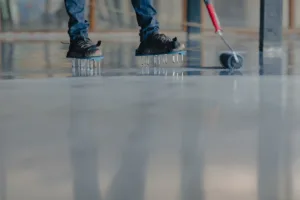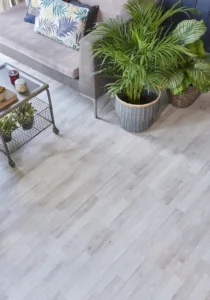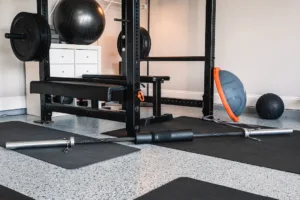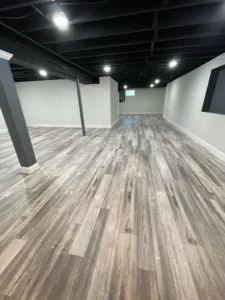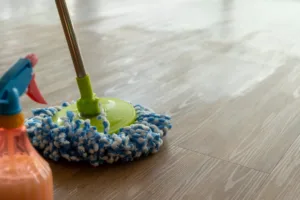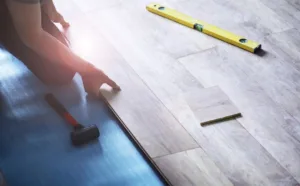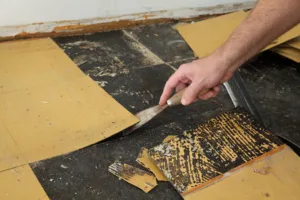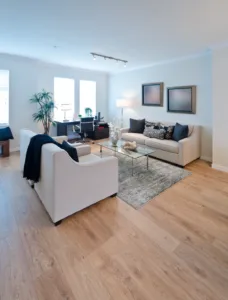The allure of transforming spaces without a complete overhaul is driving the trend towards practical home renovations. Vinyl flooring, known for its durability and diverse design options, sits high on the wishlist of many homeowners looking to refresh their domains. But an intriguing question looms: Can vinyl flooring be seamlessly installed over the existing floor?
Understanding Vinyl Flooring
Getting its start as early as the 1930’s, Modern vinyl flooring comes in different forms—Luxury Vinyl Planks (LVP), Luxury Vinyl Tiles (LVT), and sheet vinyl. Praised for its water resistance, durability, simple upkeep, and rich selection of patterns, vinyl can mimic the look of natural materials like hardwood and stone, making it a revered choice for modern households.
Preparing for Installation
Assessing the current floor’s condition is crucial for a successful vinyl flooring installation. We ensure a smooth, debris-free, and stable surface to achieve a snug fit. At floor action, we always follow our flooring manufacturer’s guidelines to ensure substrate compatibility.
Compatibility with Existing Floors
Vinyl flooring offers incredible versatility, but not all existing floors provide a suitable base for installation. The surface underneath is crucial for compatibility. Hard, flat surfaces like concrete, hardwood, or non-cushioned vinyl generally work well for applying a new layer.
However, to ensure the integrity and appearance of the new floor, it is important to remove carpeting, floating floors, or cushioned vinyl. This prevents shifting and unevenness that could compromise the floor.
Types of Existing Flooring Suitable for Overlay
- Tile: Ensure the surface is even, with no protruding edges or deep grooves.
- Hardwood: Stability is key, and moisture barriers may come into play to protect against potential warping.
- Concrete: Conduct moisture testing and level any discrepancies in the surface.
- Carpet: In most cases, especially with plush options, vinyl overlay is a non-starter due to stability challenges.
Advantages of Installing Over Existing Flooring
Opting to overlay can be an economic jackpot. By eschewing the labor-intensive process of tearing up the old floor, you not only save financially but also cut down on project time, not to mention the added convenience of a less disruptive renovation.
Potential Challenges and Solutions
Even when the decision to layer vinyl flooring over an existing floor is backed by economic and pragmatic reasons, it’s essential to understand the potential barriers that may arise.
These challenges range from dealing with uneven surfaces that can affect the vinyl’s adherence, to ensuring structural integrity that supports the added weight. With a clear game plan and thoughtful preparation, these obstacles can often be overcome.
Let’s dive into the common hurdles homeowners might face and the solutions that can pave the way for a smooth installation process.
Moisture Issues
Implement moisture barriers when necessary to prevent damage.
Thickness Transition
Consider the transition between rooms. The addition of vinyl on top of existing flooring could raise the level of the floor, posing a tripping hazard and requiring adjustment of door frames and thresholds.
Subfloor Damage
Inspect the existing floor for signs of damage. If imperfections can’t be remedied, the old floor might need to be replaced to create a solid baseline for the new vinyl.
Adhesion Concerns
The adherence of vinyl to the subfloor is critical. Ensure that the existing surface is free of waxes, polishes, or any substance that could prevent binding.
Height Differences
Plan transitions between different flooring elevations with precision.
Installation Tips for a Successful Overlay
Installing vinyl demands scrupulous attention to detail, whether it’s ensuring click-lock vinyl planks fit snugly, securing peel-and-stick tiles firmly, or employing the correct glue-down methods. Respect the need for expansion gaps and acclimate the vinyl in accordance with the temperature and humidity of its final resting place.
When to Consult a Professional
Some scenarios beg for professional intervention—odd room shapes, uncertain subfloor conditions, or any doubt about your floor’s readiness for a vinyl topping. When in doubt, the expertise of a seasoned installer is priceless. At Floor Action, we always reccomend finding a local installer with the tools and knowledge to ensure your flooring lasts.


